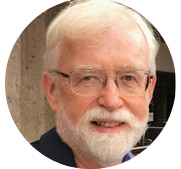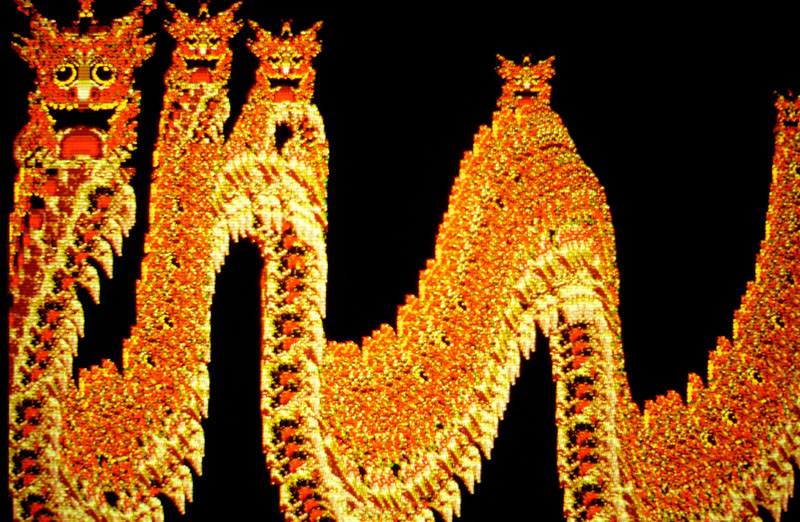The Dragon in whose fiery breath one hears the voices of the dead. The spectacular percussion sounds of the Dragon Dance which celebrate the Chinese New Year are the sole materials (recorded in Vancouver's Chinatown) for this work. These sounds include drums, bells and cymbals, and strings of small firecrackers that are set off when the Dragon, seeking to be appeased, approaches one of the storefronts. Despite being time-extended to the point where they suggest the fury of the mythical Dragon, these sounds' rhythms persist in the transformed sonic images heard here, all at their original pitch. This ritual reminds us that we must confront death in order to be able to welcome the new life and its promise as symbolized by the New Year.
The work is also the final movement of the composer's larger work Pacific (1990) which is available on the Cambridge Street Records CD Pacific Rim. Pacific Dragon is also available as a video on DVD and can be seen here.
Technical note:
The work was realized using the composer's PODX system which incorporates the DMX-1000 Digital Signal Processor controlled by a PDP Micro-11 computer. The principal signal processing technique involves time stretching of the sampled environmental sound with software for real-time granular synthesis developed by the composer in the School for the Contemporary Arts at Simon Fraser University. Sound densities ranging up to 2000 events/second were recorded on 8-track tape and mixed down in the Sonic Research Studio at SFU.
The accompanying computer graphic images were created by Theo Goldberg at the University of British Columbia on an Amiga computer using traditional Chinese dragon motifs as source. The tape was realized using the composer's PODX system which incorporates the DMX-1000 Digital Signal Processor controlled by a PDP Micro-11 computer. The principal signal processing technique involves time stretching of the sampled environmental sound with software for real-time granular synthesis developed by the composer in the School for the Contemporary Arts at Simon Fraser University.

